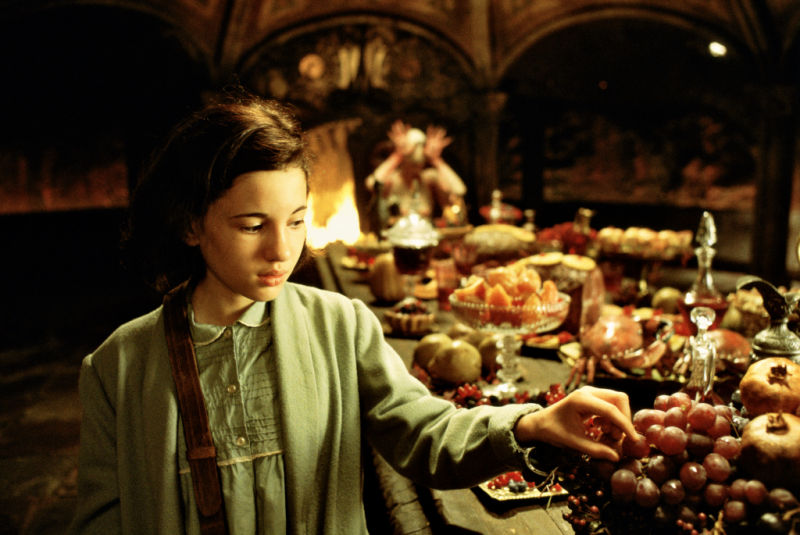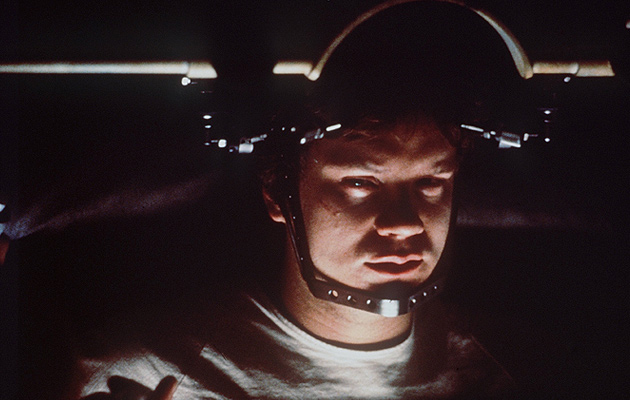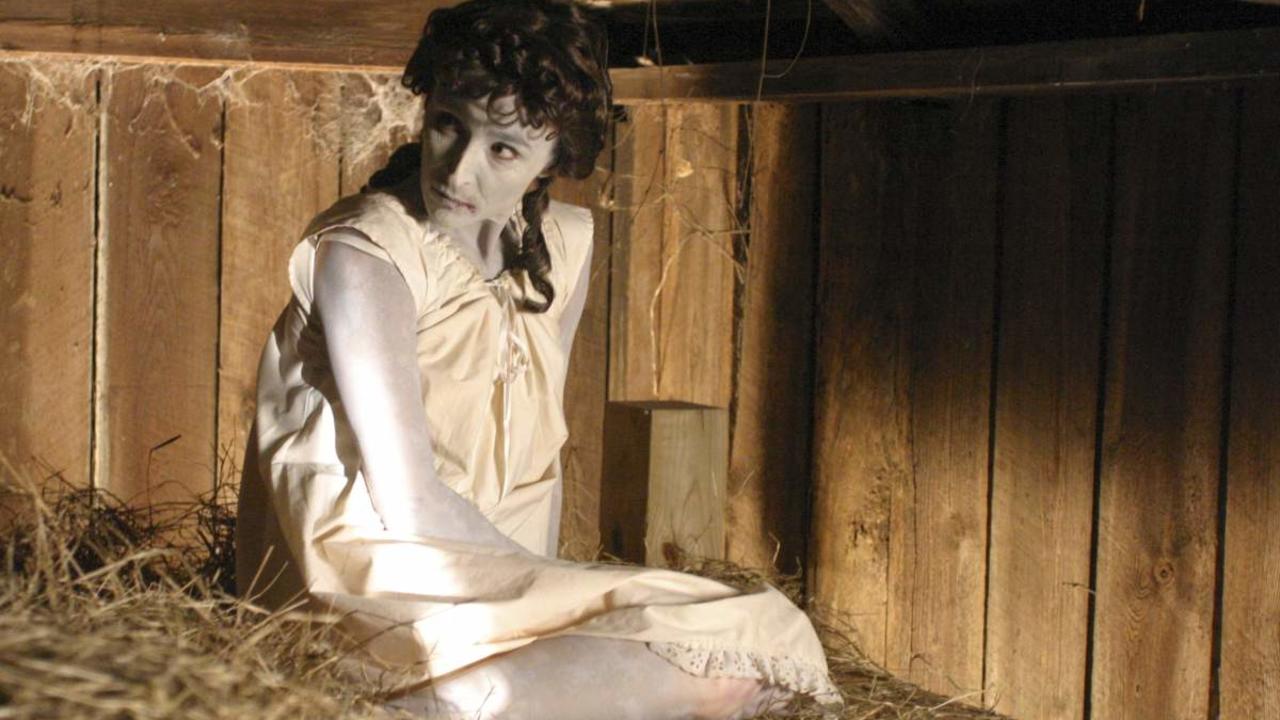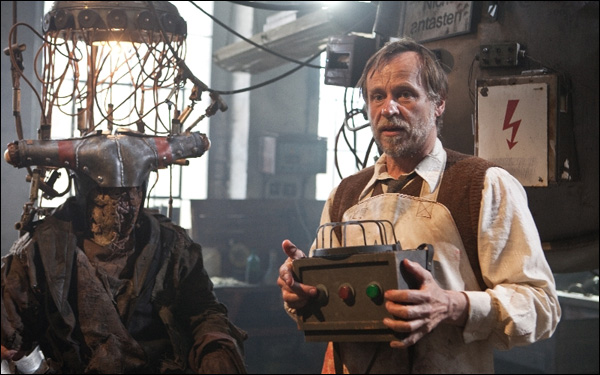6. Pan’s Labyrinth (2006)

Guilermo Del Toro’s hauntingly beautiful film “Pan’s Labyrinth” is one of the most respected fantasy-horror pictures in film history. Set during the Spanish Civil War under the rule of the fachist dictator Francisco Franco, the film follows ten-year-old Ofelia and her rich fantasy life in the home of her new stepfather, Captain Vidal of the Francoist Army. What many people love about this film, along with its unparalleled use of highest-quality CGI imagery, is its crossing of horror, fantasy and war themes in ways that are as believable as they are fantastic. The “Pan’s Labyrinth” narrative occurs in two simultaneous dimensions of storytelling: one in a household in Francoist Spain, and the other in the supernatural mythos of a young girl’s fairytale adventures. Both are horrifying, but both have a potential to turn out better in the end. Unfortunately, those who know the history understand that fascism conquered over freedom for years to come, but the film offers a silver lining in the form of hope, possibility and the power of the imagination. We never know if the fantasy elements of “Pan’s Labyrinth” are real or in the mind of the protagonist, but by the end of the story, it no longer matters.
As a horror film in a war setting,“Pan’s Labyrinth” seems to do everything right, from its darkly dramatic tone to its naturalistic blending of CGI magic with rustic period imagery. Everything on the screen, whether war violence, fantastic beings or a simple bedroom scene, appears as if it is part of our world, a mode of expression that coincides with the Latin-American magical realistic style, blending fantasy with reality in a way that makes it that much easier to suspend disbelief. Generally, realism in horror translates into more compelling viewing, as the horrors are more rooted in reality. And in “Pan’s Labyrinth” the fantastic reflects the real, and the horrors of both worlds are equivalent. Captain Vidal is as monstrous as anything seen in Ofelia’s fantasy adventures, and that is saying a lot, considering how iconic those images have become in horror-fantasy filmdom. This is a film that exemplifies horror, and at the same time demonstrates just how important a war setting can be for a story that traverses the landscape of our fears, both real and imagined.
7. Jacob’s Ladder (1990)

While “Jacob’s Ladder” does not occur during the Vietnam War, its story centers on events that occurred during the war, witnessed via flashbacks that occur periodically throughout the story. In fact, the entire premise of the film involves flashbacks, nightmares and hallucinations that vets fear are something more than post-traumatic stress symptoms. Vietnam War veterans from the same cavalry unit gather to discuss their experiences, all of them terrified and experiencing hellish episodes that threaten their sanity, while the protagonist, Jacob Singer (played by Tim Robbins), sets out to uncover the truth about what is affecting him and his comrades. What follows is some of the most terrifying sequences in film history, evoking the “war is hell” cliche with a disturbingly literal significance.
One of the most important traits of war-horror films is the significance of the setting as a context for the horror elements that follow. And a film like “Jacob’s Ladder” evinces this trait even without the war occurring in real time. With flashbacks and memories as shocking as Jacob’s, the war theme is not only central to the story but part of a broader message of the long-term, often unnecessary consequences of international conflicts. In “Jacob’s Ladder,” those consequences are even more tragic due to the all-or-nothing extremes that leaders resort to for the sake of an ill-defined victory. Very few films match war and horror with the enduring psychological experience of veterans, and almost none do so with the dramatic authenticity seen in “Jacob’s Ladder.”
8. Dead Birds (2004)

Western horror films may be a little more common than strictly war-horror hybrids, but a Western horror film with a Civil War setting is especially rare. A few do exist, but none as memorable or as stylish as “Dead Birds.” In horror, especially in lower-budget horror projects, imagery is very important, as is the cinematography and overall look and feel of the picture. While “Dead Birds” might not have the production value of some of the other films on this list, it makes up for it with frightful imagery, suspenseful pacing and impressive camera work. And in a remote location setting with a haunting atmosphere, the ensemble cast is able to create some notable chemistry as tensions escalate.
Since war-horror narratives begin with an already violent, or at least potentially violent atmosphere, the horror elements are most effective when they act as an extension of that violence that then carry the story into more extraordinary circumstances. This is exactly what “Dead Birds” accomplishes, and it’s what makes the film successful as a horror hybrid. Any film that takes on Western tropes is risking a certain level of hokeyness (i.e. camp, intentional or otherwise), but striking horror imagery tends to quash such perceptions and draw the viewer in, especially when the actors are believable and the direction is sophisticated enough to keep the audience’s attention. These are noteworthy achievements for any film, but especially for a film with an estimated budget at less than $2 million USD.
9. Dead Snow (2009)

Humor can be found in war as in any other setting, and the gore or splatter genre makes use of that context in ways that are both mocking and cynical, making fun of the violence and celebrating the macabre extremes of dark comedy. If a comedy is going to be dark, after all, there are few subjects darker than war. In the Norwegian film “Dead Snow,” war horror and dark humor are combined with a particularly loathsome emphasis on carnage. “Dead Snow ” makes the list as an example of war-horror irony, a use of war and horror conventions for entertainment first, and underlying social commentary a far second, if at all. “Dead Snow” is the epitome of postmodern irony and irreverence, combining self-evident Nazi and zombie cliches in a single villainous archetype that exists solely for the sake of the kill (for killing as well as being killed). This mishmash of an enemy is more ridiculous (or ridiculed) than sinister, and the film’s over-the-top approach almost becomes a parody of its own genre by the second half, which reduces the Nazi-zombie to a near caricature of an antagonist, hard to kill but also a bit hard to take seriously.
“Dead Snow” does not take place during a war, but its monsters are clearly remnants of the WWII period. Even if they resemble more of a parody than a true Nazi of the war era, it is difficult to separate even a stock Nazi character from the atrocities of the National Socialists, and that, perhaps, is part of the appeal of the Nazi zombie. Like a war setting, the war character type brings all the baggage of its history and overrides any need for a backstory to prop up the persona. And if viewers are far enough removed (i.e. a film audience in 2021), such a persona can indeed be comical and horrible at the same time.
10. Frankenstein’s Army (2013)

A one-of-a-kind film, the Dutch-American-Czech Found Footage chiller “Frankenstein’s Army” may not be about Frankenstein’s monster, but it does take the idea to its unnatural extreme of machine-enhanced corpses in force. Fitting for a hybrid film, “Frankenstein’s Army” is a depiction of every imaginable abomination of machine-cadaver composition for warfare purposes, including saws, drills, firearms and blades, all concocted with the finesse of a mad Nazi scientist with more interest in the art of his handiwork than the effectiveness of the resulting troopers.
Mimicking found footage, “Frankenstein’s Army” takes a single perspective much like a first-person video game, and with mixed results. The premise, that a journalist from the Ministry of Propaganda is sent to follow a Russian reconnaissance unit on its way to Berlin, is effective in its own right, but efforts to make the film resemble footage from a 1940s cinecam are a bit perfunctory. The real fun of this film is, once again, all about the monsters. These are not your run-of-the-mill resurrected Nazis; they are hideous amalgamations of death and deadliness, pieced together for one specific reason: to butcher their enemies. Like most war-horror films, “Frankenstein’s Army” begins with war and ends in horror, but its makeup and effects department truly went to extremes in designing the grotesque and diverse zombie-automatons featured throughout the finale. As the final entry in our list, “Frankenstein’s Army” serves as a symbolic representation of the war-horror hybrid, a composite genre that gives us truth and terror in a single cinematic package, reminding us that however horrible the monsters may be, they, like war, are horrors of our own making.